The Heart of the Stone
/Created by the writer Tor Nørretranders, this exhibition at the Danish Architecture Centre is the third in a series under the title Close up and looks at the work of the Copenhagen architectural firm of Lundgaard & Tranberg Arkitekter. Formed in 1983 by Boje Lundgaard and Lene Tranberg they have been responsible for a number of important and prominent buildings in the city.
This is not a conventional architecture exhibition for there are no architectural drawings, few comments about or detailed analysis of specific buildings and few photographs of works by the partnership. Rather, it uses a number of statements and images to make visitors re-assess their own preconceptions about how architecture, particularly the architecture of public buildings and public spaces, should be seen … over a sink being filled with running water one statement points out that familiarity means we see pipes as pipes and not for the water they carry … so buildings should not be considered primarily as blocks or facades but as containing or defining spaces where light, air and, most important of all, people move to act and live out their lives. One panel towards the end of the exhibition has the declaration “Architecture is about creating good lives. Not about creating fine buildings. Good architecture makes life flow through the world.”
However, major elements in the exhibition do make visitors stop and look in a different and thought-provoking way at three large and prominent buildings in the city that they probably know and may already take for granted.
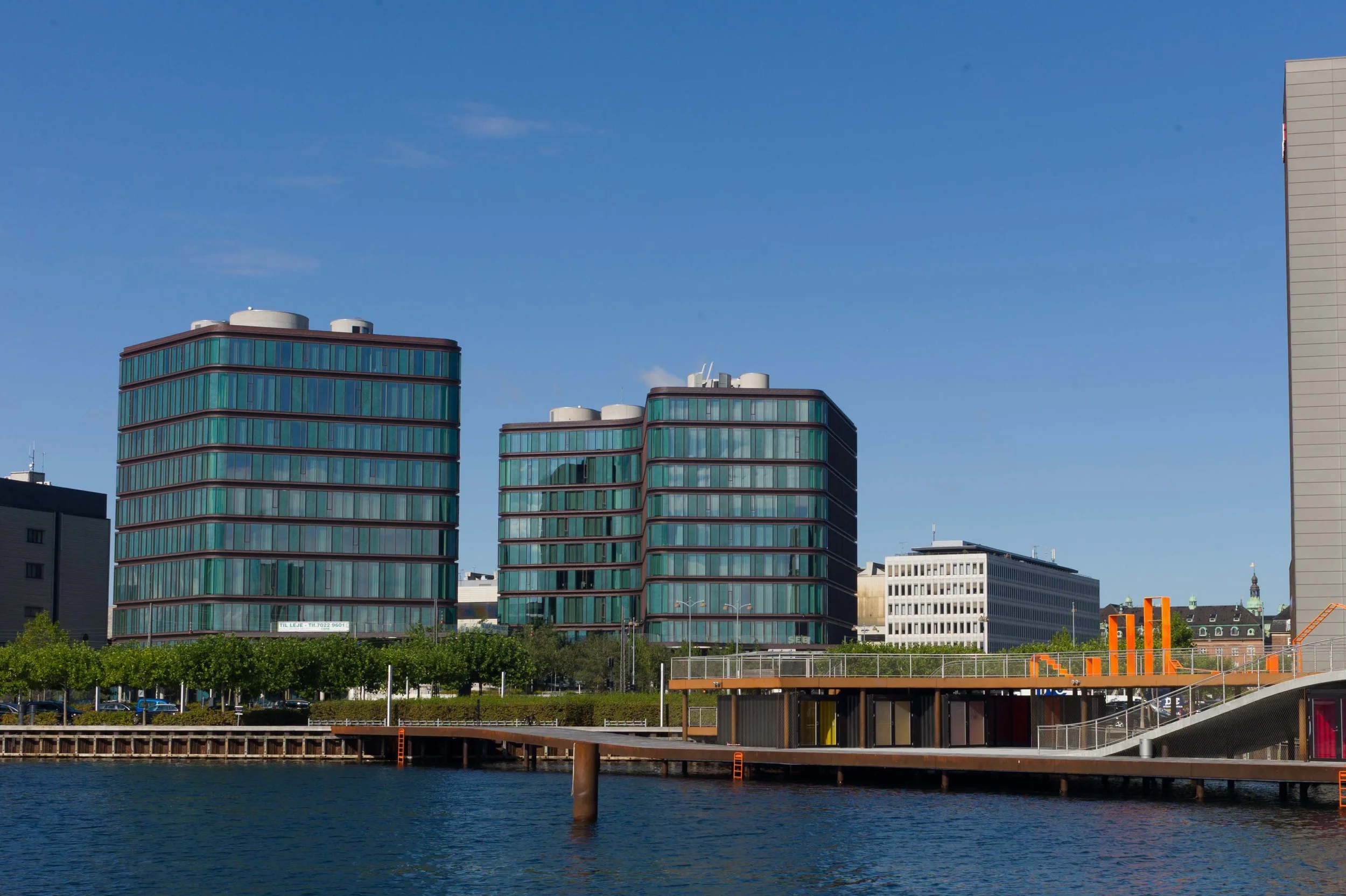

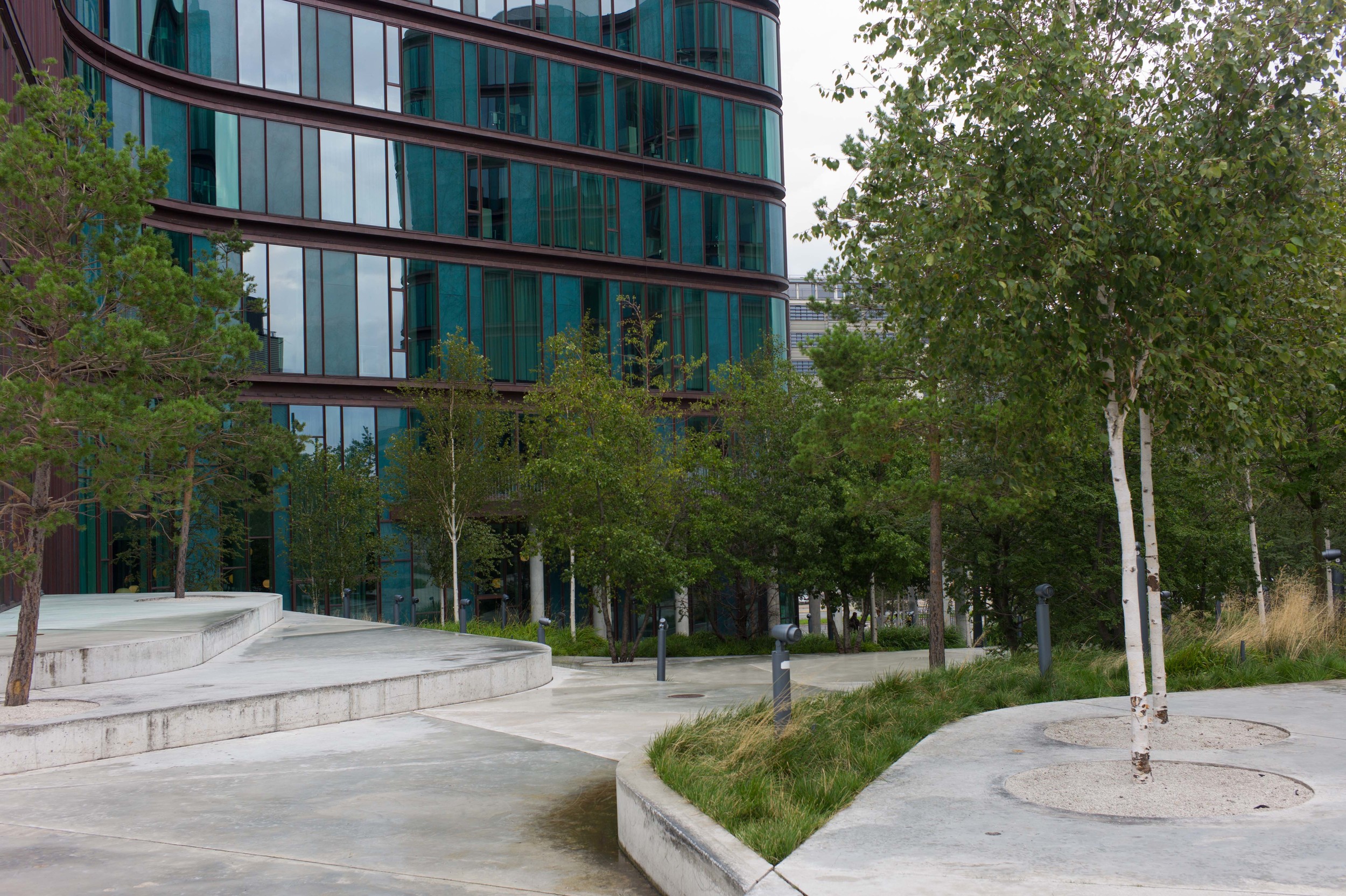
A time-lapse film projected onto a large screen shows the movement of traffic and people around the SEB Bank buildings completed by Lundgaard and Tranberg in 2010. These are two large blocks with irregular undulating walls flowing around a large open space planted with trees and in particular the effect of light on the buildings, changing as clouds move across the sky, is striking in the film. Presumably the message is that our reaction to a building can be fixed by the specific time of day when we first saw it and the response can be influenced if we perceive it to be uncomfortably crowded with people or deserted in a disconcerting way.
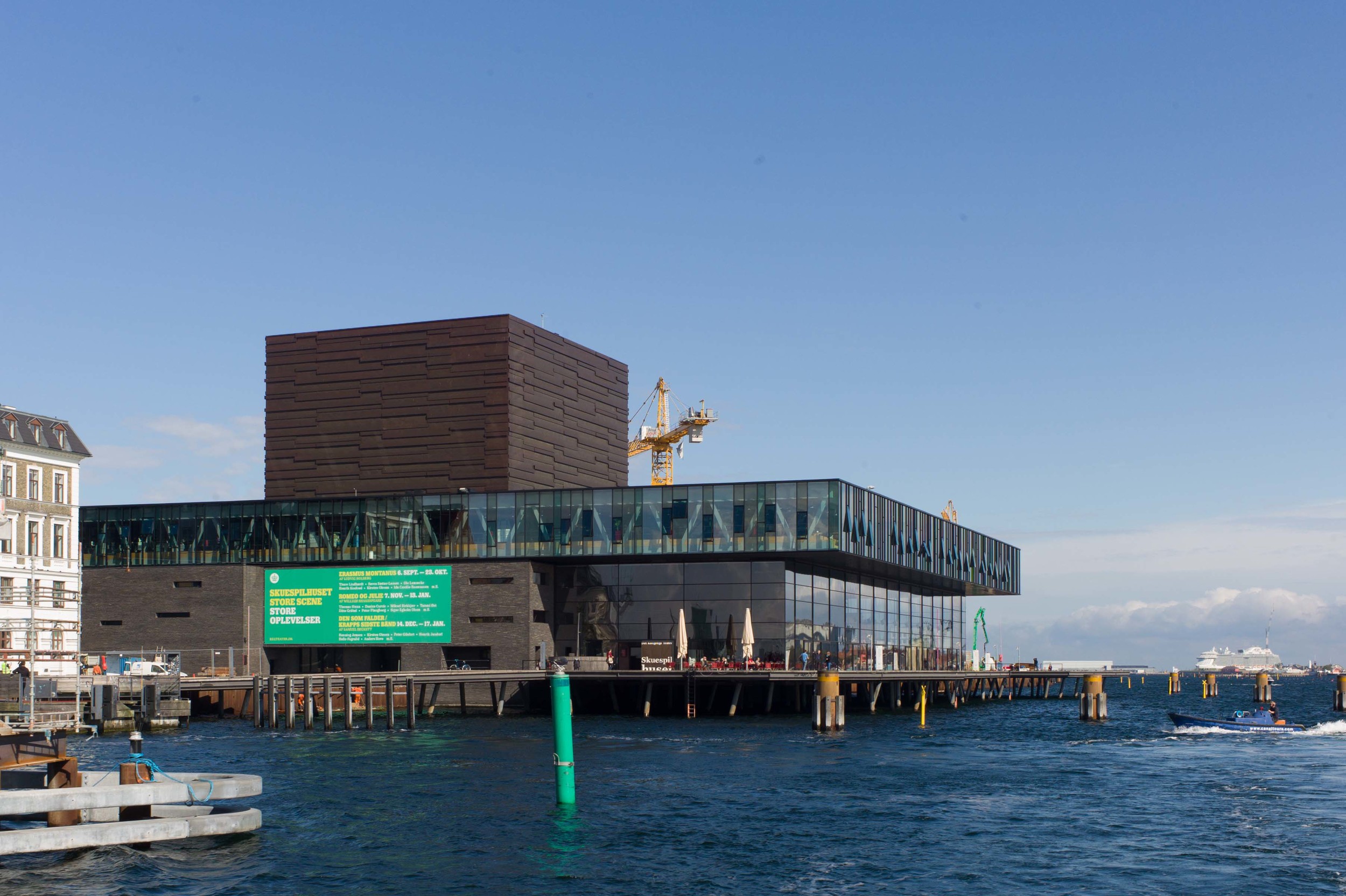
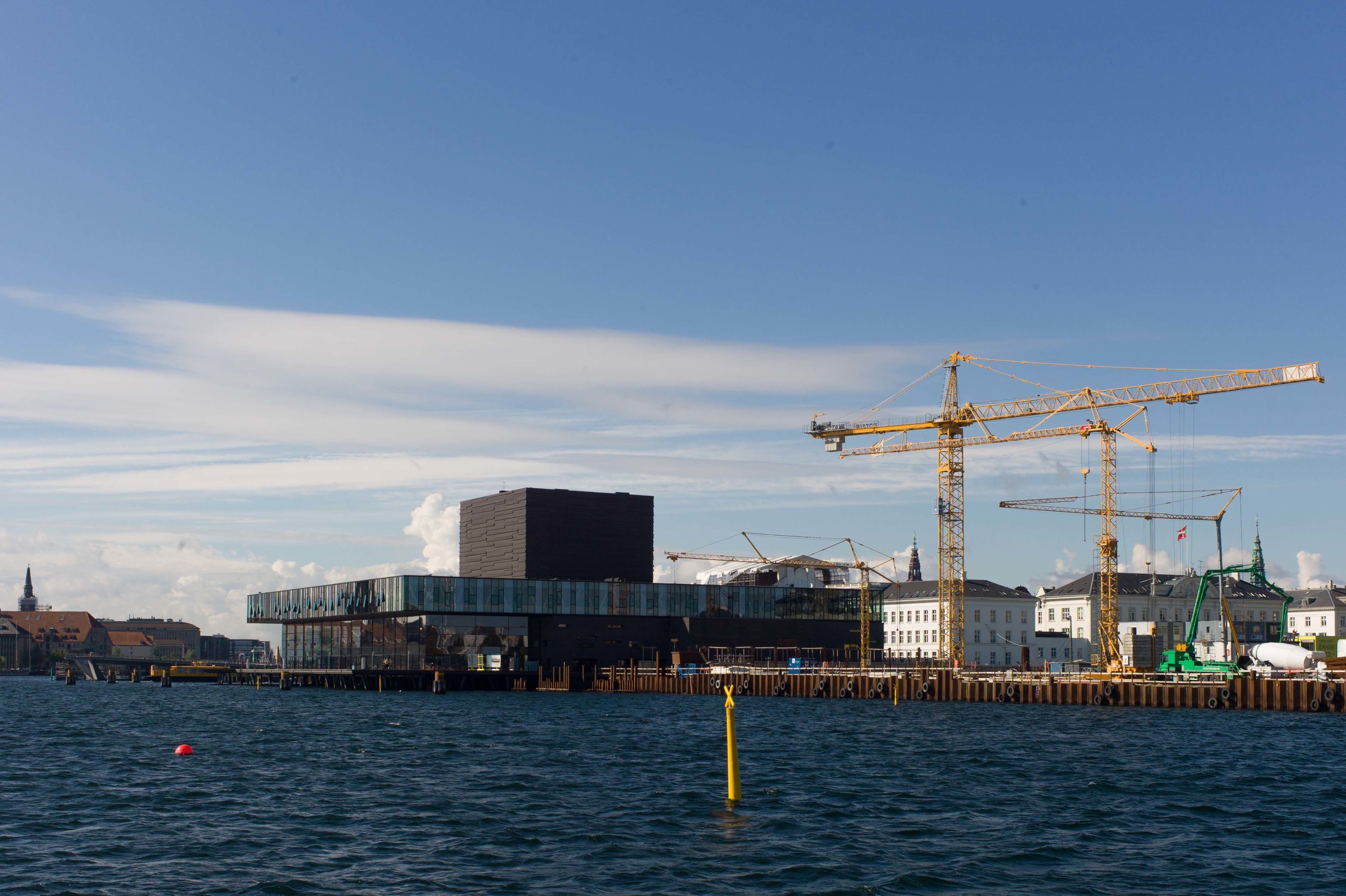
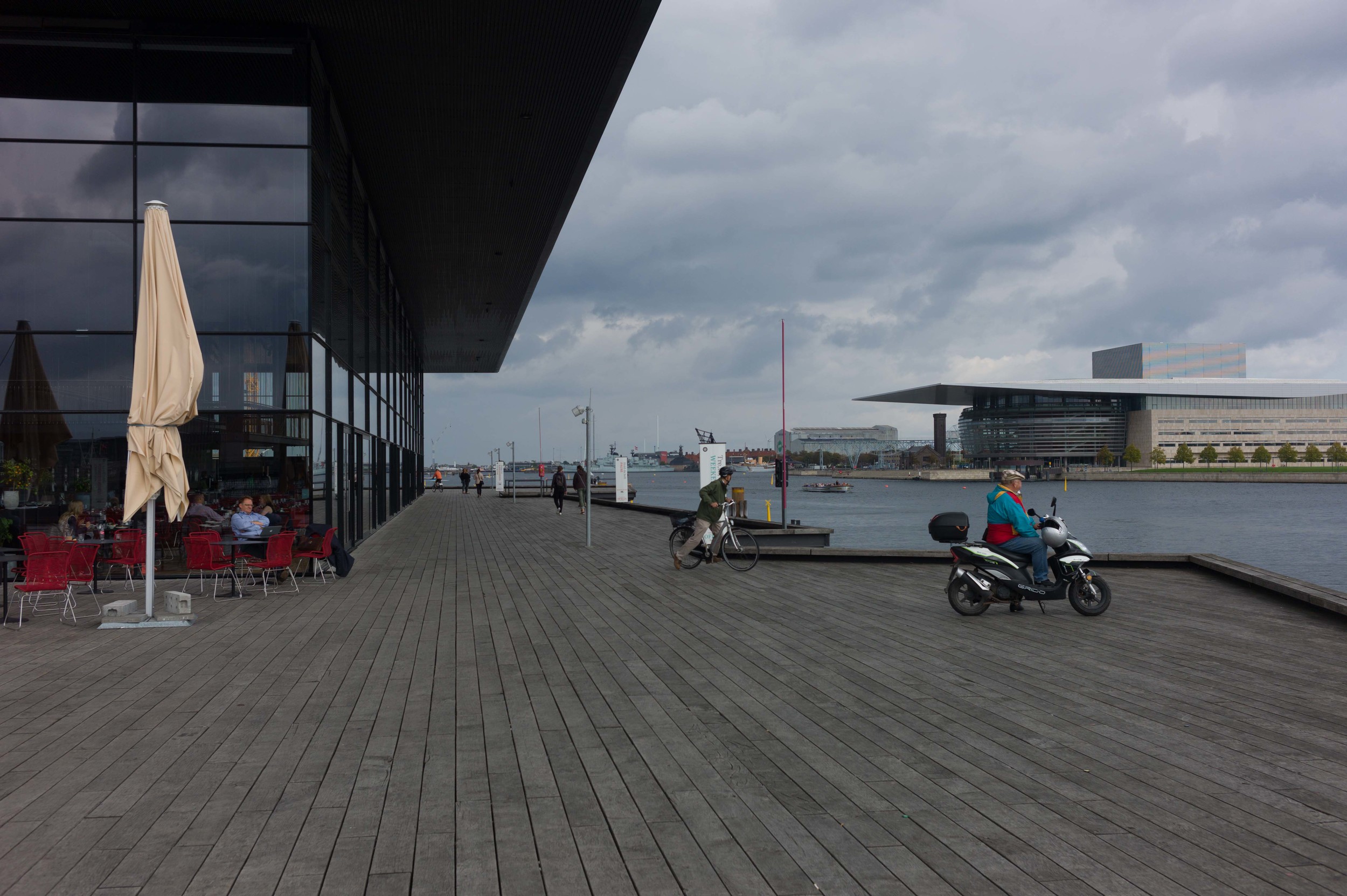
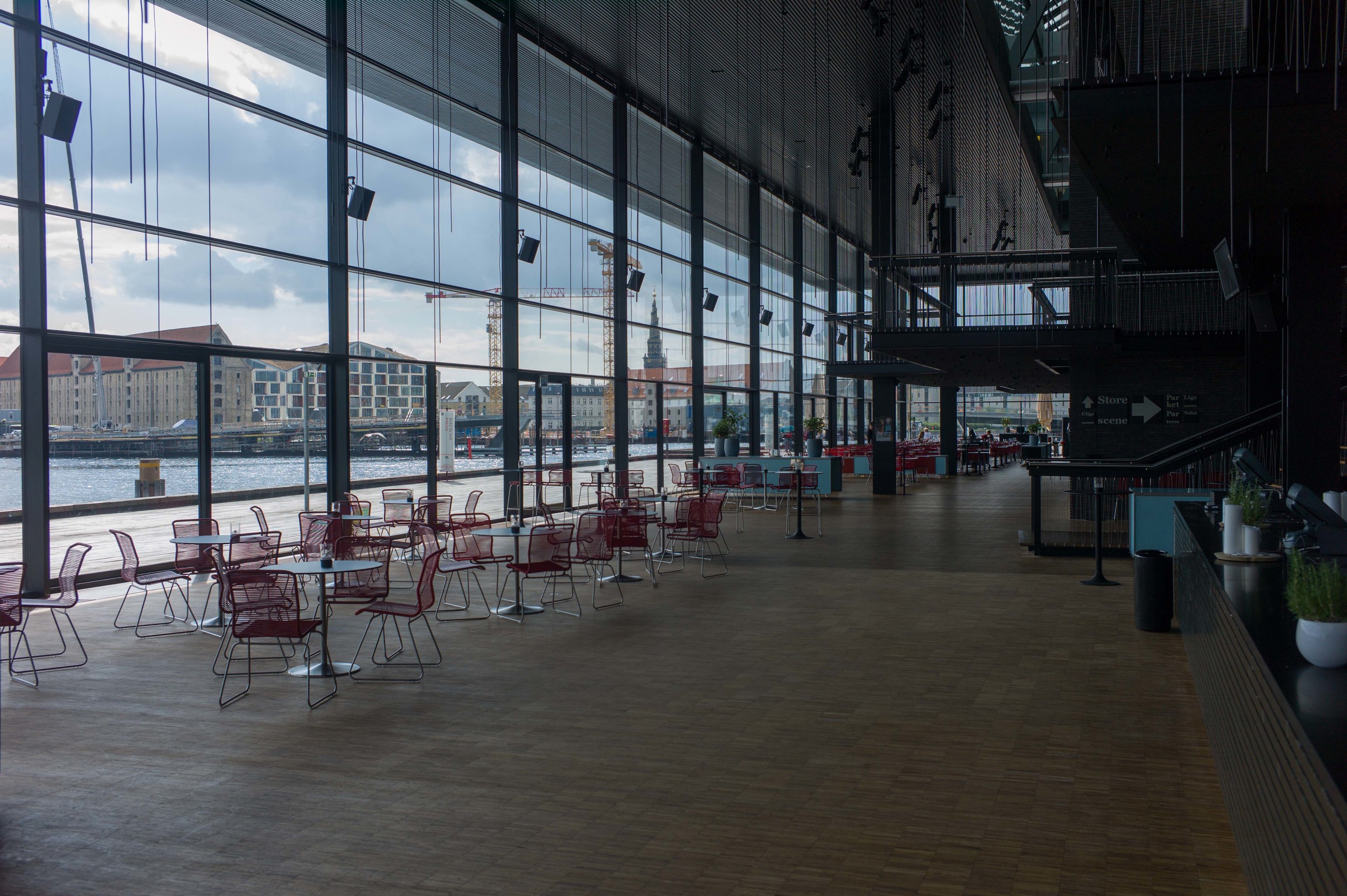
A set of strategically placed mirrors brings views of the Skuespil Huset - The Royal Danish Playhouse - right into the gallery space. The substantial block of the theatre, completed in 2008, is on the opposite side of the harbour and quite some distance away from the Architecture Centre so it is slightly disconcerting and slightly disorientating to see it somehow so close and even, in one mirror, in mirror image. Presumably that was the point … to take a familiar building and quite literally see it from a completely different point of view.
The Playhouse does also illustrate well one major aim of the exhibition and that is to examine how people use and move through and around a building which can determine its success or, in the case of other buildings, explain its failure. The terrace walk around the Playhouse, described by the architects as a promenade, and the terrace cafe with chairs that can be moved to follow the sun around the building has made the space very popular and this is likely to become more significant as the former ferry terminal immediately to the north is made into important new public space and the new foot bridge taking pedestrian and cyclists over the harbour immediately to the south of the Playhouse is completed. The new river walk and new terrace of the Playhouse shows that a building may well be judged by the public not in terms of facades or style or quality or even by how well it fulfils its intended purpose but in terms of how it fits into and facilitates what they want to do and how they want to use the space.
The third building given prominence in the exhibition is the Tietgenkollegiat in Ørestad - student housing that was completed in 2002. The building is circular in outline and around a circular courtyard with kitchens for the students and communal rooms arranged to look inwards and the private spaces of bedroom/study rooms looking out. The rooms are formed as a series of boxes stacked to project or recede from the barely defined facade line. This emphasises the individual but also gives them a perspective on their place within the student community but also a wider relationship to the world beyond. The fragmentation of the facades, described as a crystalline structure, in a clever and successful way, creates offsets for balconies, restricts or opens out view lines and, crucially, makes light and shadow, as the day progresses, key elements of the design.
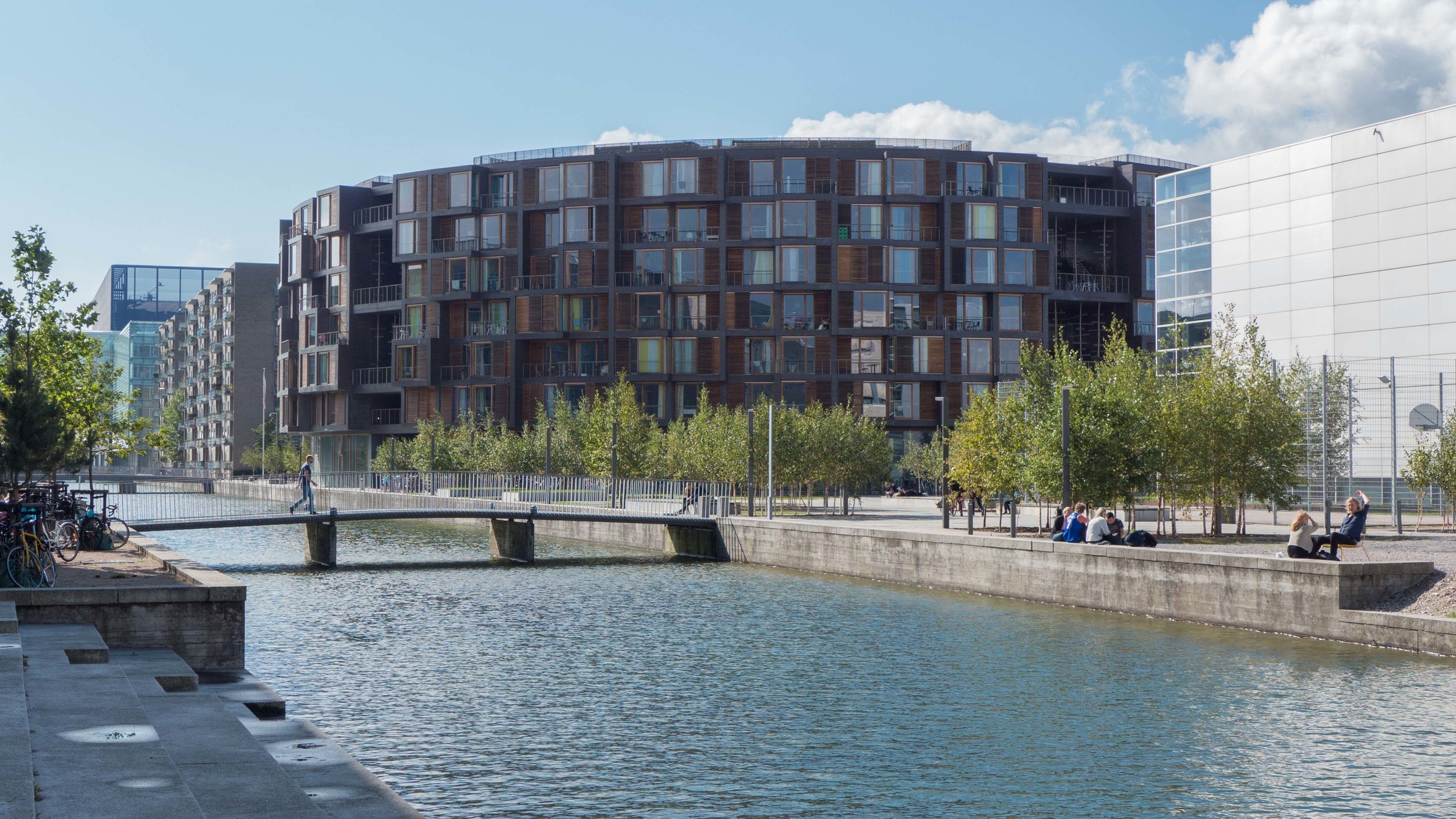


For the exhibition there is a 1/20 model with the front of each room created with a photograph showing in some cases students standing at the windows looking out, in one area students with rock-climbing equipment and helmets scaling the outside and in others students eating or sitting on the terrace balconies. The photographs also change in the time of day shown as you move around the model from morning to afternoon to evening to night so there is also a sense of not just the change of light but the way activities change … in the areas photographed in the late evening or early morning curtains or shutters are closed ... and it shows clearly how the activities in the building and the role of the building are different at different times of the day. It shows that the ways in which a major building is used is rarely static.
the exhibition continues until the 21st September
Follow the link to the DAC site for opening times.
